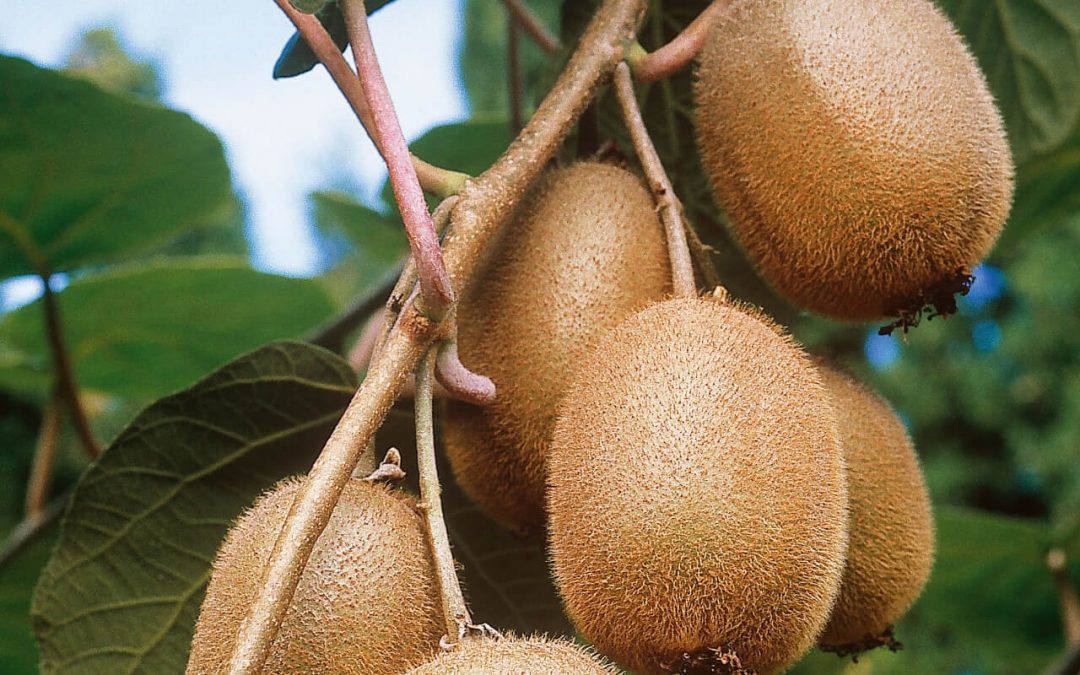Kiwi plants, with their sweet, tangy fruits and vibrant green foliage, are a delightful addition to any garden. Cultivating kiwi vines (Actinidia spp.) requires patience and care, but the reward of harvesting your own juicy kiwis is incomparable. This comprehensive guide will walk you through every step of nurturing kiwi plants, from soil preparation and planting to maintenance and harvesting, ensuring your garden thrives with these exotic vines.
Contents
Understanding Kiwi Plants: Varieties and Climate Needs
Kiwi plants are native to China and come in several varieties, each with unique care requirements and fruit characteristics. The most common types are the fuzzy kiwi (Actinidia deliciosa), known for its brown, fuzzy skin and bright green flesh, and the hardy kiwi (Actinidia arguta), which produces smaller, smooth-skinned fruits that can be eaten whole. The golden kiwi (Actinidia chinensis) offers a sweeter, yellow-fleshed alternative.
Kiwi plants thrive in temperate climates but can be grown in zones 7-9 with some winter protection. They require well-drained, slightly acidic to neutral soil (pH 6.0-7.0) and a sunny location with shelter from strong winds. Understanding your local climate and selecting the right kiwi variety is crucial for successful cultivation.
Planting and Training Kiwi Vines
Site Preparation and Planting
Begin by preparing the site in early spring, ensuring the soil is rich in organic matter. Consider adding compost or well-rotted manure to enhance soil fertility. Kiwi plants are dioecious, meaning male and female flowers are on separate plants; hence, you will need at least one male plant for every eight female plants to ensure pollination and fruit production.
Support Structures
Kiwi vines require strong support structures, such as trellises or pergolas, to support their vigorous growth. Install these structures before planting to avoid damaging the roots later on. Space the plants 15-20 feet apart to allow ample room for growth.
Caring for Kiwi Vines: Watering, Fertilizing, and Pruning
Watering and Mulching
Regular watering is essential for kiwi plants, especially during dry spells. Mulch around the base of the plants to retain moisture and regulate soil temperature, but keep the mulch away from the stems to prevent rot.
Fertilizing
Feed kiwi plants in early spring with a balanced fertilizer to support healthy growth. Avoid high-nitrogen fertilizers, which can promote leaf growth at the expense of fruit production.
Pruning
Pruning is critical for kiwi plant health and productivity. Prune vines in winter to remove dead or overcrowded branches and encourage fruiting spurs. Summer pruning involves trimming new shoots to prevent tangling and maintain the structure of the plant.
Pest and Disease Management
Kiwi plants can be susceptible to pests like aphids and diseases such as botrytis (gray mold). Regular monitoring and early intervention with organic pesticides or fungicides can help manage these issues. Ensuring good air circulation around the plants also reduces the risk of disease.
Harvesting and Enjoying Kiwi Fruits
Kiwi fruits typically ripen in late fall. Harvest the fruits before the first frost when they are still firm and allow them to ripen at room temperature. Freshly harvested kiwis can be stored in the refrigerator for several weeks.
Kiwi fruits are not only delicious but also packed with vitamins C and K, fiber, and antioxidants. Enjoy them fresh, in salads, or as part of delicious desserts and smoothies.
Conclusion
Caring for kiwi plants requires dedication, but the satisfaction of harvesting your own kiwis is well worth the effort. By following these guidelines, you can ensure your kiwi vines thrive, providing you with a bountiful harvest of delicious fruits year after year.


